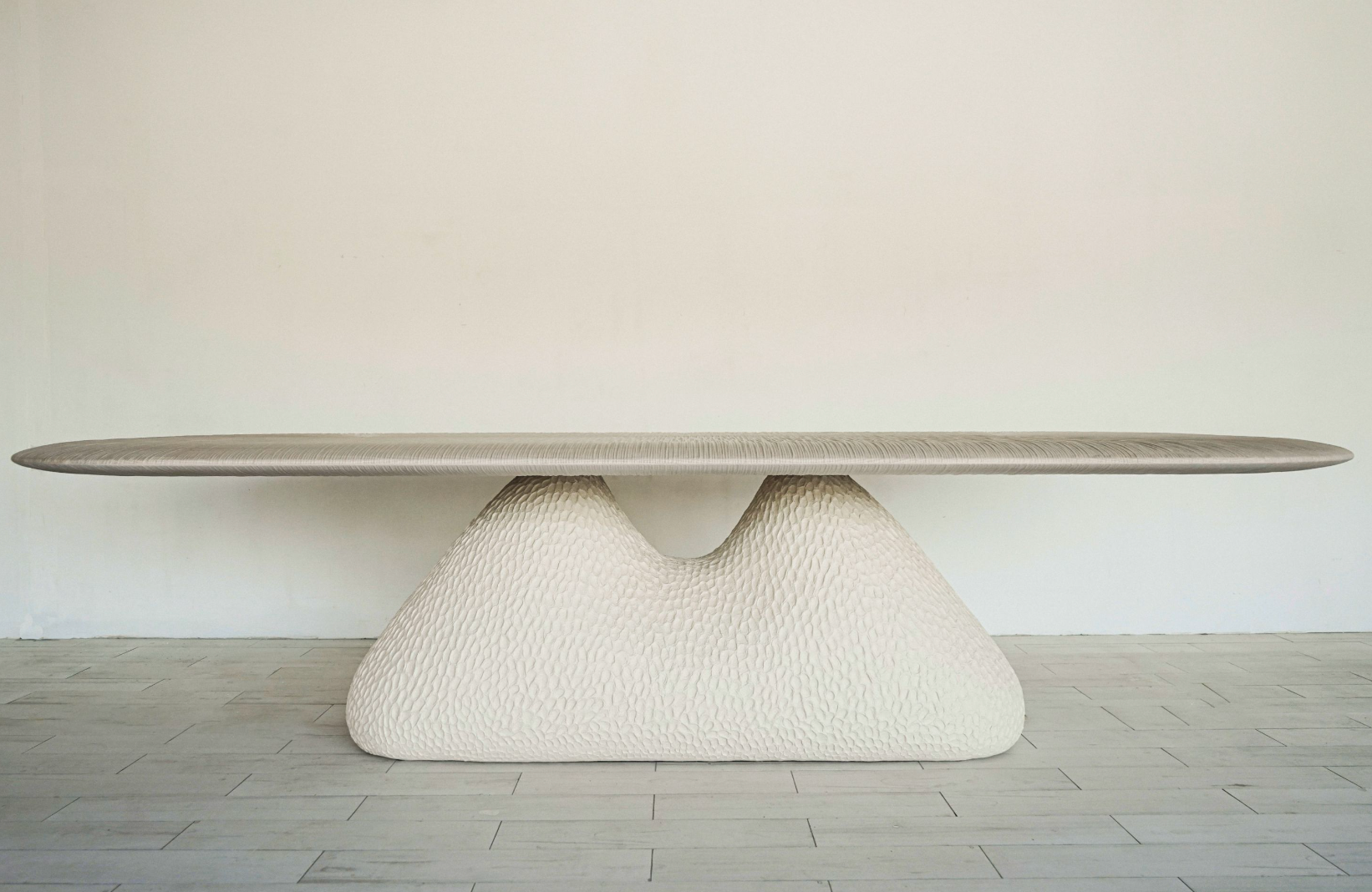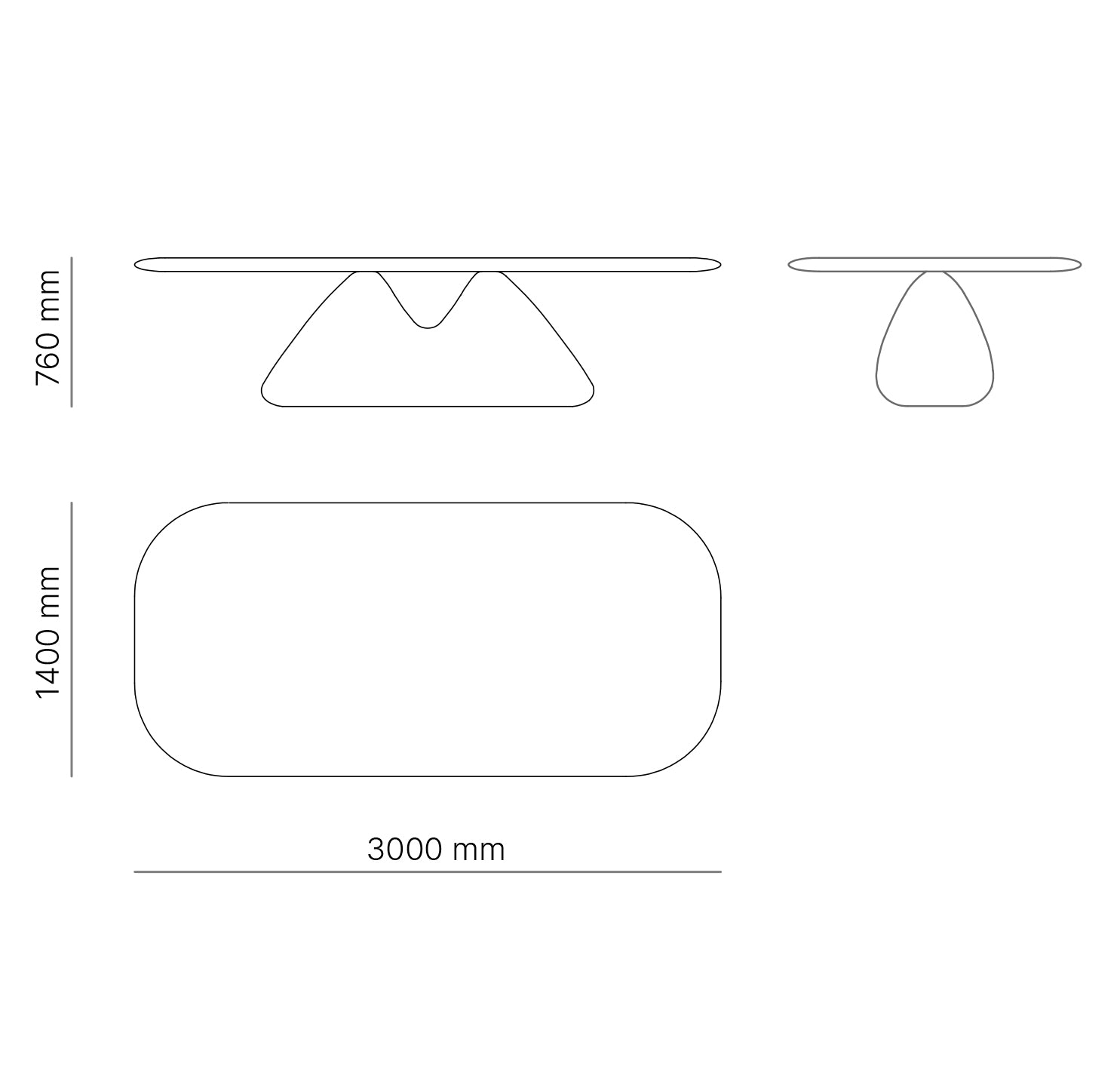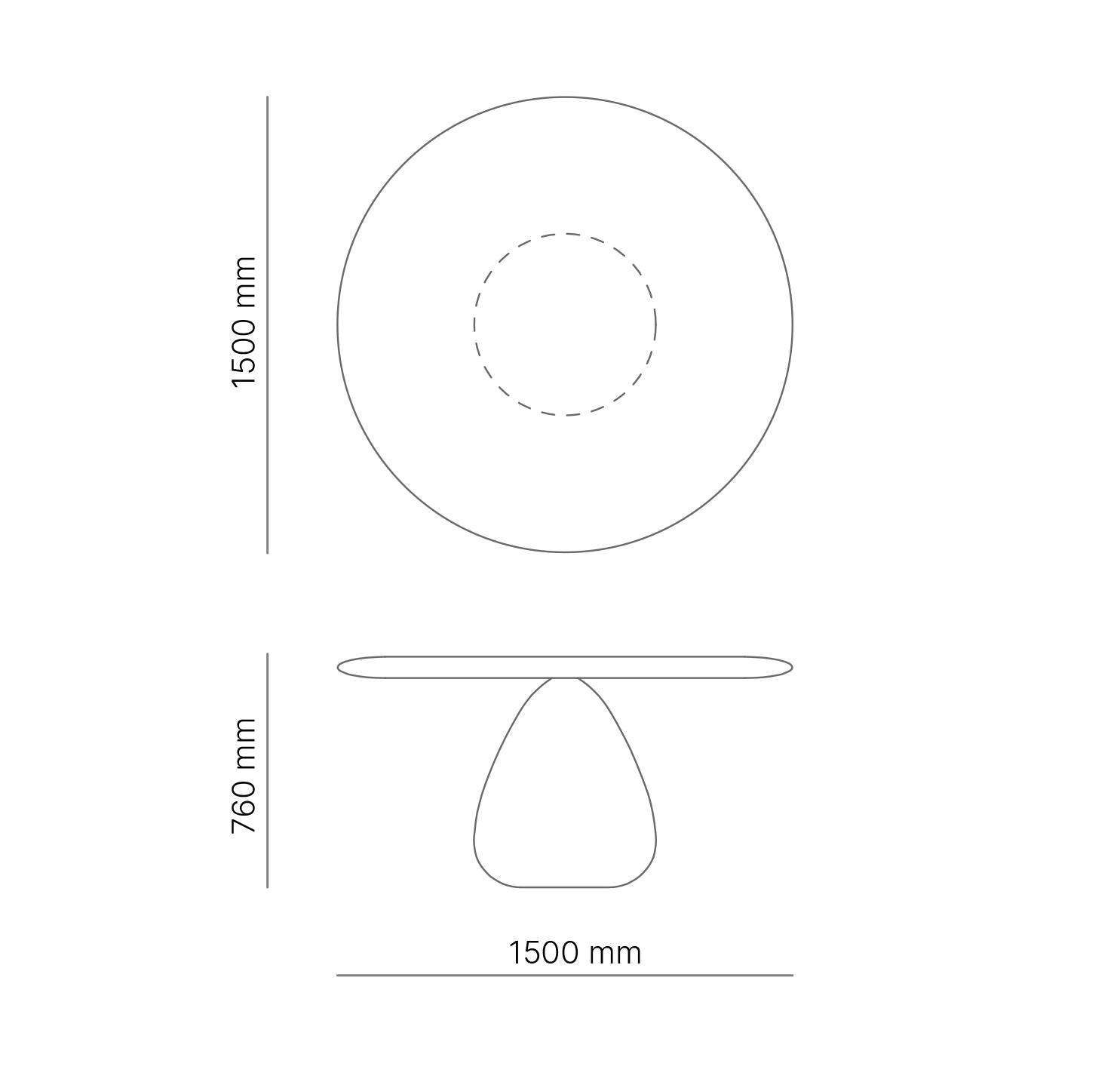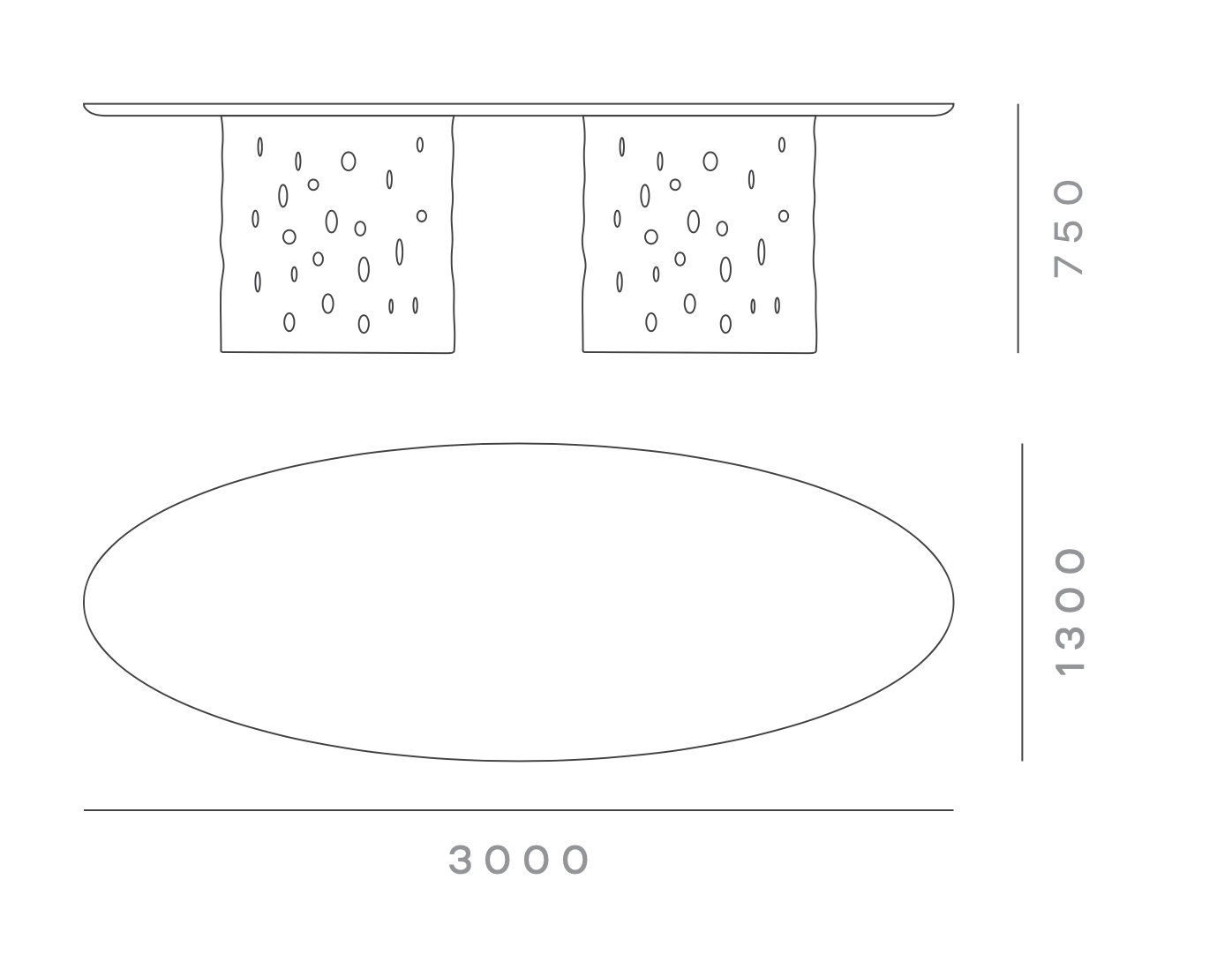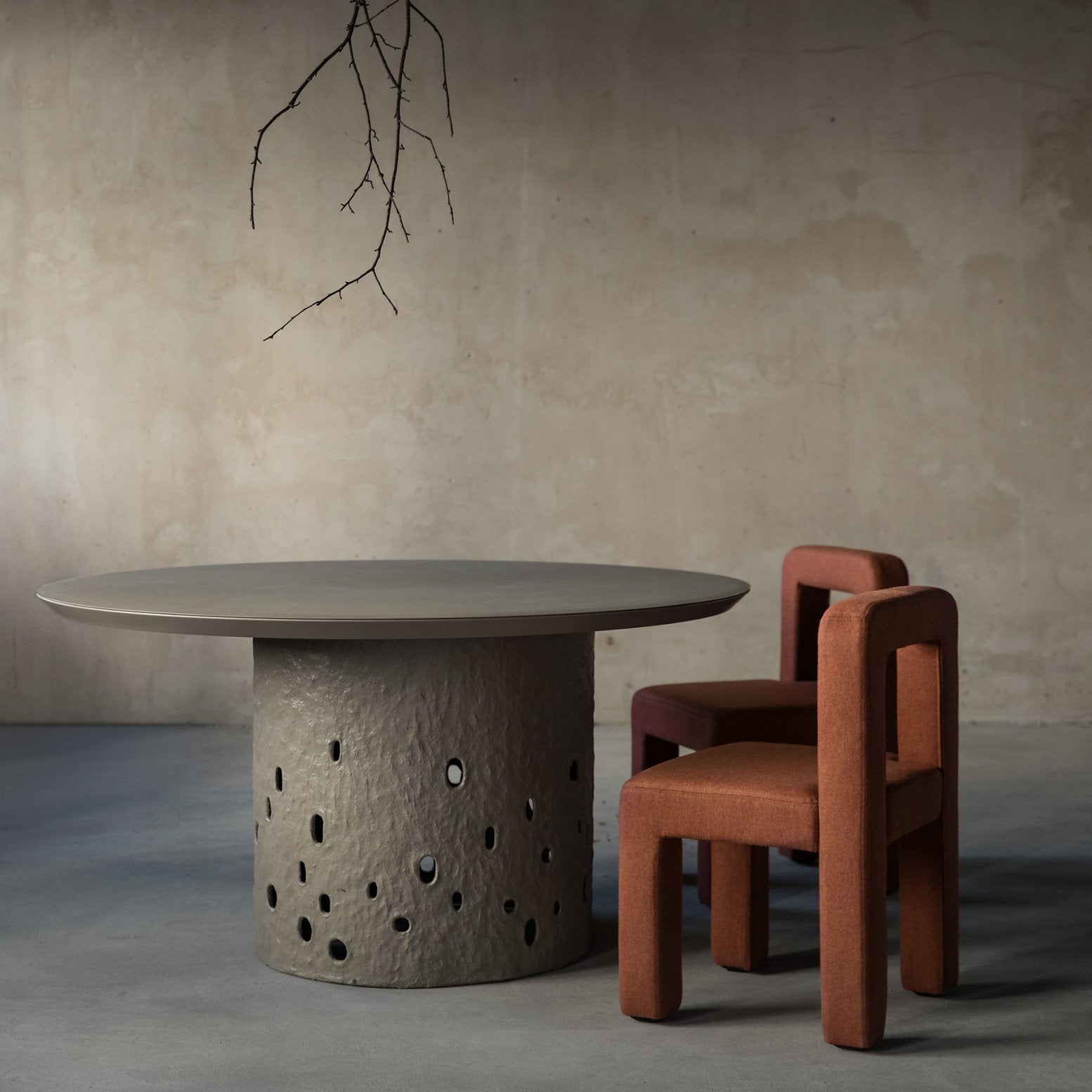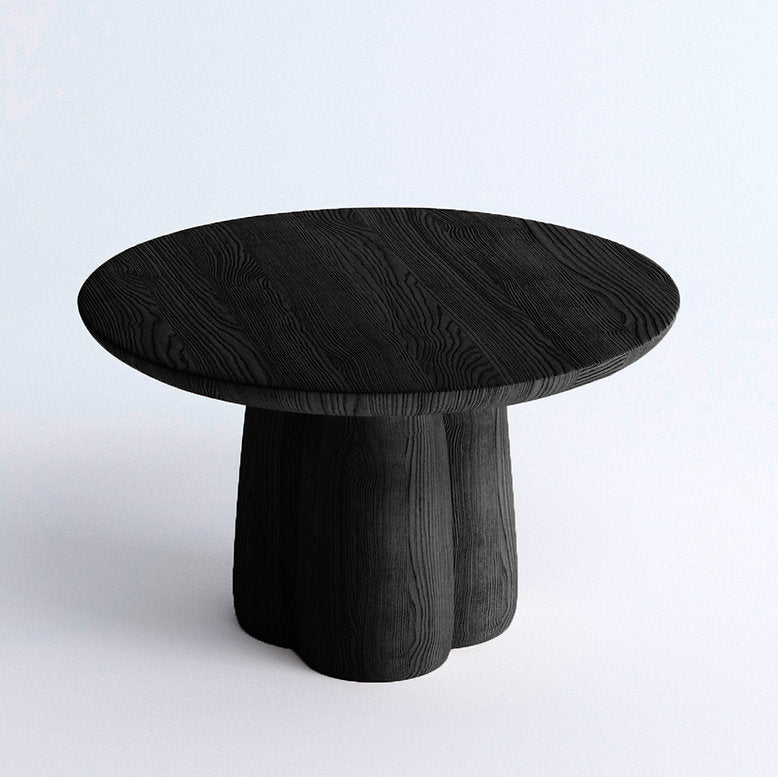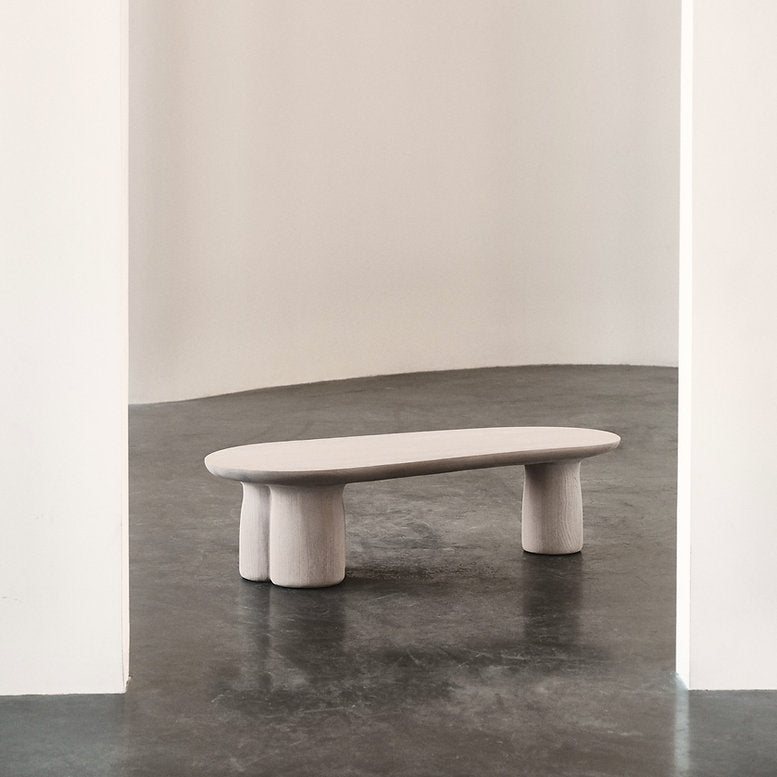The table often drives the design of a contemporary interior. In architectural space, whatever — dining area, living space, or studio — a sculptural table holds a commanding presence — it organizes circulation space, provides a sense of balance to the room, and generally coordinates proportions throughout the room. A table embodies form and function: generous in its surface, lean in its line, and tactile in its material.
What Makes Sculptural Tables Unique
Sculptural tables have an architectural presence but possess a warm quality. Combining simple geometry with expressive materiality, they are designed in a way that feels grounded and fluid. Some are monolithic pedestals, while others take the form of soft curves with organic edges made by hand. Whether they are round, oval, or asymmetric, these tables bring visual rhythm and harmony to both minimalist and richly layered spaces.
Sculptural Tables: Materials and Techniques
We hand-manufacture each sculptural table with artisans by using natural and sustainable materials. The core element of the work is ZTISTA, the signature material of FAINA, which consists of clay, flax fiber, recycled cellulose, and wood chip, coated with a biopolymer for strength and durability. The combination of these materials creates a surface with a texture and a “living” feel that produces the motion of the maker’s hand. Each table is somewhat different — every surface has its own level of unique character.
Other models use solid wood, smoked or clear glass, and stone tops, selected for their durability and tactile quality. Each table is made to order, when possible embodying the ideas of slow design and material honesty.
Where to Place Sculptural Tables in an Interior
Sculptural tables adapt naturally to different environments and functions. In dining rooms, a large round or oval table serves as a central point for gathering. In living areas, smaller versions act as side or coffee tables, adding form and texture without visual clutter. In bedrooms, a bedside table or console table in ZTISTA or wood introduces warmth and material balance. In public or hospitality interiors, their sculptural lines and tactile surfaces convey a sense of intent and quiet sophistication.
How Sculptural Tables Transform a Space
In addition to being practical, sculptural tables can shift the individual balance of your space. They serve as visual anchors — contextualizing an open plan and connecting to other pieces or objects with similar shapes or materials. A handcrafted finish enhances depth and tactility to the flat surface, allowing the quality of light to dance across the subtle textures. Functional art, each piece is timeless and elemental.
How to Choose the Perfect Sculptural Table
To choose the right sculptural table, start with proportion. For dining, allow 75–78 cm of height and allow 60 cm per person for comfortable dining. Round or oval forms work best for intimate, social arrangements, while rectangular or monolithic shapes are appropriate for organized arrangements. Materials matter too: a ZTISTA or wooden table adds warmth and mass; glass brings a sense of lightness; stone has permanence and weight.
Finally, if you are working with a single project, you may want to consider pairing your dining table with an occasional side or coffee table in the same sculptural style to maintain consistency of texture and proportion. The length of each FAINA table is made to order, allowing you to customize the scale, finish, and tone of your order to your interior aspirations.
